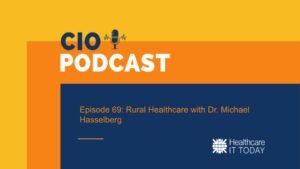 The following is a guest article by Ron Jones, Director of Operations at Revenue Enterprises
The following is a guest article by Ron Jones, Director of Operations at Revenue Enterprises
Benchmarks are a hallmark of quality in both clinical and nonclinical healthcare processes. However, customer service as part of patient satisfaction is one area where there is no agreed-upon benchmark. The COPC (Customer Operations Performance Center), a global leader in contact center management, auditing, and training, recommends 84% or higher as the world-class patient satisfaction standard to strive for.
The Importance of the Patient Financial Experience
Patient loyalty is vital to an organization’s bottom line and brand reputation, but it is increasingly more challenging to come by. Today’s patients are more savvy about how to spend their healthcare dollars and they have more options than ever regarding where to get their care. Retail clinics, walk-in urgent care centers, telehealth companies, and pharmacy clinics are readily available, significantly more convenient, and often less expensive.
Ninety percent of patients surveyed said that provider loyalty depends on the patient financial experience. However, nearly one in seven U.S. adults with unpaid medical bills say they’ve had a provider deny them care due to that medical debt, leading many to put off care.
What Patients Want
Provider organizations must understand that the customer determines service quality, not the organization providing the service. In any industry, but especially healthcare, patients are looking for two things: Accuracy and speed. This applies to both clinical and financial encounters. With clinical encounters, speed and accuracy can mean the difference between life and death. The speed and accuracy of a financial encounter can mean the difference between being able to afford the care they need or not. Both can impact outcomes, costs, and the patient experience.
Recent research by COPC indicates that 98% of customers say they’ve had to use multiple methods to resolve a single inquiry, and 72% have had to contact the organization to get help with a customer service or technical issue. The same research found that the majority of customers prefer human-assisted, real-time interactions.
When it comes to customer service channels, webchat and phone are most preferred. The self-service technologies most used are the mobile app, websites, and chatbots in that order. It is interesting to note that the resolution rate for self-service technologies is just 41%, but it’s an important option to offer that patients want.
Elements of Optimal Patient Financial Customer Service
Healthcare is notoriously complex, making it challenging for many patients to navigate, especially the financial aspects. Hospitals and health systems that approach patient financial customer service as simply a collection opportunity are missing a key chance to enhance patient satisfaction and develop loyal customers. A better approach is to focus on education using patient pay responsibility estimations as a critical component. Customer service staff can use these estimations to help patients better understand their health plan’s requirements, including co-pays, deductibles, medical necessity, prior authorizations, and explanation of benefits (EOBs).
When organizations take an educational approach to customer service, they position themselves as advocates for the patient, not adversaries just trying to collect.
Other elements of world-class patient financial customer service include the following:
- Comprehensive, Single-Touch Complaint Resolution
- Self-Service Patient Payment Options, Including Patient Portal, Online Chat, IVR, and SMS
- Inbound and Outbound Patient Calls
- Call Recording and Transcripts for Transparency and Quality Monitoring
- Identifying Insurance Coverage not Captured at Discharge
- Assisting Patients with Setting Up Payment Plans
- Helping Patients Find and Apply for Financial Assistance
Keys to Measuring Customer Service Success
According to TechTarget, there are ten key metrics that can be used to successfully measure and monitor customer satisfaction and the customer experience. These include the following:
- Net Promotor Score (NPS): The NPS is derived by asking a single question about how likely a customer is to recommend the organization to a friend. The answers fall into three categories: promoters, passives, and detractors. The NPS is determined by subtracting the portion of detractors from the portion of promoters.
- Customer Satisfaction (CSAT) Score: The CSAT score is based on customer survey feedback and measures how satisfied customers are with the service or product they received from the organization.
- Customer Effort Score (CES): The CES measures how easy or difficult it is for the customer to use the organization’s service or product. Because of the complexity of healthcare, CES is especially important.
- First-Time Response (FRT): The FRT measures how long it takes the customer to get a response to their initial inquiry. This is a vital metric to track as it can indicate systemic customer service operational issues. Poor response times can cause patient frustration and damage the organization’s brand.
- Average Resolution Time: This is the average time it takes from the first customer inquiry to the final resolution and includes all interactions. Ideally, the faster the resolution time, the more satisfied the customer.
- Churn Rate: Simply put, the churn rate is the rate at which organizations lose customers. When the rate of customers leaving an organization is higher than the rate of acquiring new customers, organizations should take note.
- Retention Rate: The retention rate reflects the number of customers who use the organization’s products or services over a period of time and is a good indicator of patient loyalty.
- Customer Lifetime Value (CLV): The CLV measures the total revenue the organization receives from a single customer over a long period of time. In general, keeping customers costs less than acquiring new ones.
- Visitor Intent: This metric is especially helpful for measuring the digital customer experience. For example, if a patient visits a hospital’s patient portal, they may be looking to schedule an appointment, find a test result, determine a service’s cost, make a payment, or something else. Understanding the visitor’s intent can help an organization better identify a customer’s needs and opportunities to better meet those needs, which can ultimately impact customer satisfaction.
- Customer Referral Rate (CRR): Healthcare organizations are typically seen as a vital part of a local community. As such, they depend a lot on word-of-mouth referrals. This metric helps measure not just customer satisfaction but also brand reputation.
The Most Effective Patient Satisfaction Surveys
While patient satisfaction surveys have become the foundation for capturing metrics and measuring patient satisfaction, not all surveys are successful. The most insightful, actionable feedback comes from surveys that follow these three simple rules:
- The Survey is Sent Immediately: The timeframe between the time of service and the time the survey goes out is vital to ensuring the best feedback. Timeliness will help ensure the most comprehensive, accurate response.
- The Survey is Short and Easy: Longer surveys are more likely to get abandoned. Four questions should be enough to capture the essence of the patient’s experience.
- Create a Patient-Centric Tone: Surveys that come across as cold and methodical can be seen as insincere and off-putting. Instead, focus on compassionate communication and sensitivity. After all, the survey is a continuation of the entire patient encounter and should be treated as carefully as the initial encounter.
Organizations should leverage feedback loops that aggregate by both solution and reputation, as each is vital to creating a world-class customer experience.
The Bottom Line
There are two things providers should consider when thinking about patient financial customer service. First, a poor financial experience can completely negate a positive clinical experience, damaging patient satisfaction ratings and the hospital’s brand reputation. Second, the most satisfied customers are those who don’t need to contact customer service in the first place. That being said, building a world-class customer service experience for those who do need an issue resolved can save a patient relationship and create a loyal customer for life.
Get Fresh Healthcare & IT Stories Delivered Daily
Join thousands of your healthcare & HealthIT peers who subscribe to our daily newsletter.



